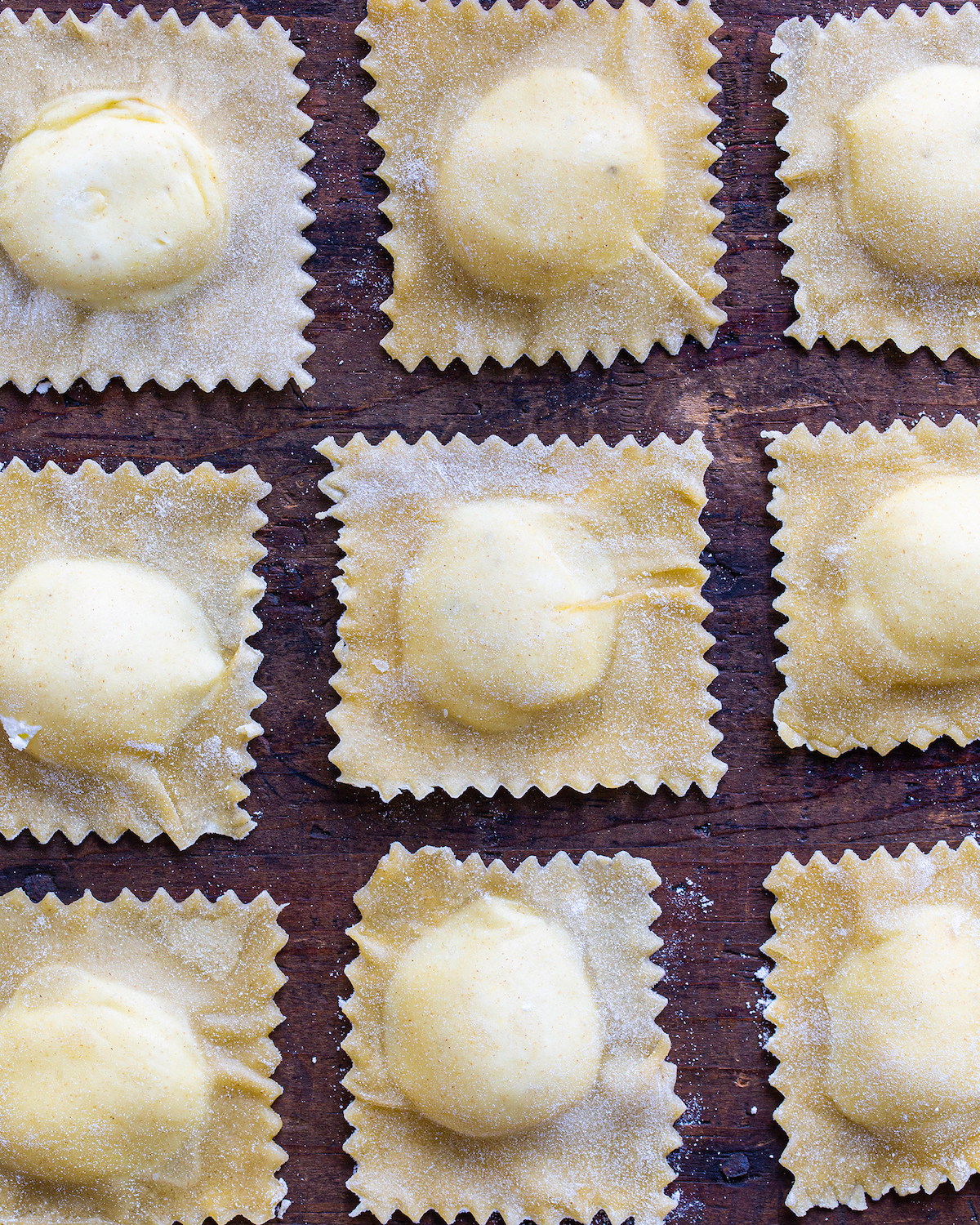Making ravioli takes me way back to my summers at cooking camp in elementary school. I have great memories of us all helping to hold up the ridiculously long piece of pasta while one person fed it into the pasta roller. At the time, I remember being filled with excitement to impress my family when I got home to show them my new ravioli making skills.
Though serving handmade ravioli is sure to impress any table you serve it at, making ravioli from scratch is not nearly as difficult as most people think. The key is ensuring you roll the pasta dough as thin as possible to form the correct shape, keep it nicely floured to avoid sticking, and to ensure that there are no unwanted air pockets. Inside the ravioli, I put a simple yet delicious filling of ricotta, parmesan, lemon zest, and freshly ground pepper. It’s subtle flavors pair beautifully with both a cream or tomato-based sauce.
Lemon Pepper Ravioli
WHAT YOU’LL NEED
For the Pasta Dough:
- 2 cups all-purpose flour plus more for dusting
- 1 teaspoon salt
- 3 large eggs
- 2 tablespoon extra-virgin olive oil
For the Filling:
- 1 cup ricotta cheese
- 1/2 cup parmesan cheese freshly grated
- Zest of 1 lemon
- ½ teaspoon black pepper freshly ground
- ¼ teaspoon kosher salt
Instructions
For The Pasta Dough:
- Pour out the flour onto a clean work surface and form a well in the middle. Add the salt, eggs, and olive oil into the center of the well. Lightly beat the wet ingredients with a fork. Gradually draw in the flour from the inside wall of the well in a circular motion. Once it starts to come together, knead with your hands until it completely combines into a ball of dough. Continue kneading for 5-7 minutes, until smooth. If the dough is too dry, add a teaspoon of water and keep kneading. Form the dough into a smooth ball, wrap in plastic wrap, and set aside for 30 minutes.
For the Filling:
- In a small bowl mix the ricotta, parmesan, lemon zest, black pepper, and salt, until fully combined. Transfer the mixture into a zip-lock or piping bag. Right before forming the ravioli, cut a small piece off of one of the corners.
Assembly:
- Set up a pasta roller on your kitchen counter or table. Flour the entire work-surface around the pasta roller. Divide the dough into thirds and, using your hands, form each into a rectangle. Pass one of the pieces of dough through the roller on its widest setting twice. Change the roller to the next thinnest setting, and again run the piece of dough through twice. Continue through each setting until you have gone through the second to the thinnest setting (on mine that was #6.) Note that after a few runs through the machine, the pasta will get very long, so flour regularly throughout the process to ensure there is no sticking. Once rolled out completely, cut the long piece of pasta in half and lay it down on your floured work surface. Repeat this process with the rest of the dough.
- To fill the ravioli, pipe a teaspoonful of filling at 1 ½ inch intervals, about 1 inch from the edge of the dough, to cover ½ of each sheet of pasta. Dip a pastry brush in water and lightly brush around the filling. Fold the other ½ of the sheet of pasta over the filling side and press around each round of filling, pushing out any air and sealing ravioli. Using a crimped pasta cutter or a knife, cut halfway in between the fillings to form the ravioli shape. Dust formed ravioli with flour until using. If storing for any longer than 2 hours, place on a floured baking sheet in the fridge.










